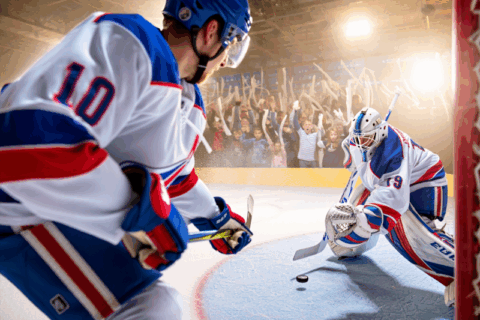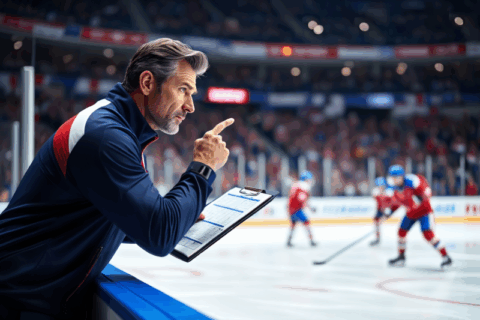How Capturing Motion Speed Boosts Stunning Still Images
Introduction: The Dynamic Power of Movement in Photography
In the realm of modern hockey and ice culture, the thrill is in the movement—the rapid puck snaking across the ice, players bursting into action, and coaches strategizing behind the scenes. Translating that energy into still images can seem challenging, yet it is precisely this challenge that unlocks the true power of visual storytelling. Embracing motion speed in photography doesn’t just freeze a moment; it captures the emotion, intensity, and spirit of the game.
The Art of Freezing Speed: Why Motion Matters
Before diving into how to craft captivating images that showcase movement, it’s important to understand why motion speed is critical. In fast-paced sports like hockey:
- Energy and Excitement: Capturing a player skating at full speed conveys adrenaline and passion.
- Narrative Depth: Motion can tell a story—whether it’s the swift glide of a skater or the explosive shot.
- Visual Impact: A well-timed shot emphasizing speed creates images that are both dynamic and memorable.
Mastering the technique of capturing speed enhances your ability to transmit these qualities and elevates your photography skills.
Techniques to Capture Speed and Motion in Still Frames
There are several key methods and settings to consider when aiming to transform movement into compelling still images:
1. Use Fast Shutter Speeds
- Why: To freeze fast-moving subjects without blur.
- Recommended Settings: Shutter speeds of 1/1000s or faster for sports action.
- Tip: Adjust ISO accordingly to maintain proper exposure, especially in lower light conditions.
2. Panning to Emphasize Movement
- Technique: Follow the subject’s movement with your camera during exposure.
- Effect: The subject appears sharp, while the background gets blurred, conveying motion.
- Best Practice: Use a slower shutter speed (around 1/30s to 1/125s) for natural motion blur.
3. Incorporate Motion Blur Purposefully
- Creative Impact: Blurring certain elements emphasizes speed and power.
- How: Use deliberate camera shake or slower shutter speeds combined with panning.
4. Focus and Timing
- Precision: Use continuous autofocus to keep moving subjects sharp.
- Timing: Anticipate peak action moments—just before or during the shot—to transmit energy.
The Emotional Impact of Motion in Still Images
Capturing motion isn’t solely about technique; it’s about storytelling. A photograph that brilliantly depicts a speeding puck or a skater mid-air evokes emotions—exhilaration, determination, passion—that resonate with viewers. These images serve as visual narratives, connecting audiences emotionally and authentically reflecting the game’s intensity.
Elevate Your Photography with a Storytelling Approach
Integrate your technical skills with storytelling techniques:
- Capture the Context: Include elements like the crowd, ice markings, or team jerseys to add depth.
- Highlight Expressions: Focus on athletes’ faces to convey focus and adrenaline.
- Use Composition to Guide the Eye: Leading lines, framing, and perspective direct attention to speed and movement.
Choosing the Right Gear to Capture Fast Action
Having the proper equipment is essential:
| Equipment | Purpose | Recommendations |
| Telephoto Lenses | Capture distant action with detail | 70-200mm or 300mm for sports photography |
| High ISO Cameras | Adapt to fast shutter speeds in varying light | Cameras with excellent low-light performance |
| Image Stabilization | Minimize camera shake during panning | Modern lenses with effective stabilization |
Frequently Asked Questions (FAQs)
Q: How do I balance shutter speed and image quality? A: Use the highest shutter speed that still allows proper exposure, and adjust ISO and aperture as needed. Shooting in RAW format provides more flexibility in post-processing.
Q: Can I capture motion fast enough with a smartphone? A: High-end smartphones with fast autofocus and high ISO capabilities can do a decent job, but dedicated cameras offer superior control for high-speed sports photography.
Q: How do I convey the feeling of speed without motion blur? A: Use techniques like panning or include elements that imply movement, such as a trail of dust or motion lines.
Conclusion: Harnessing the Power of Movement to Transform Still Photography
In the vibrant world of modern hockey and ice culture, capturing movement speed in still images unlocks an extraordinary level of storytelling. By mastering technical techniques and understanding the emotional power behind motion, you can create images that not only freeze a moment but also echo the thrill, strength, and beauty of the game. Elevate your visual narratives—embrace the art of speed in still frames and let your photography truly embody the heart-pumping energy of the ice.
Ready to take your sports photography to the next level? Start experimenting with these techniques today and turn fleeting moments into timeless images that speak volumes.



